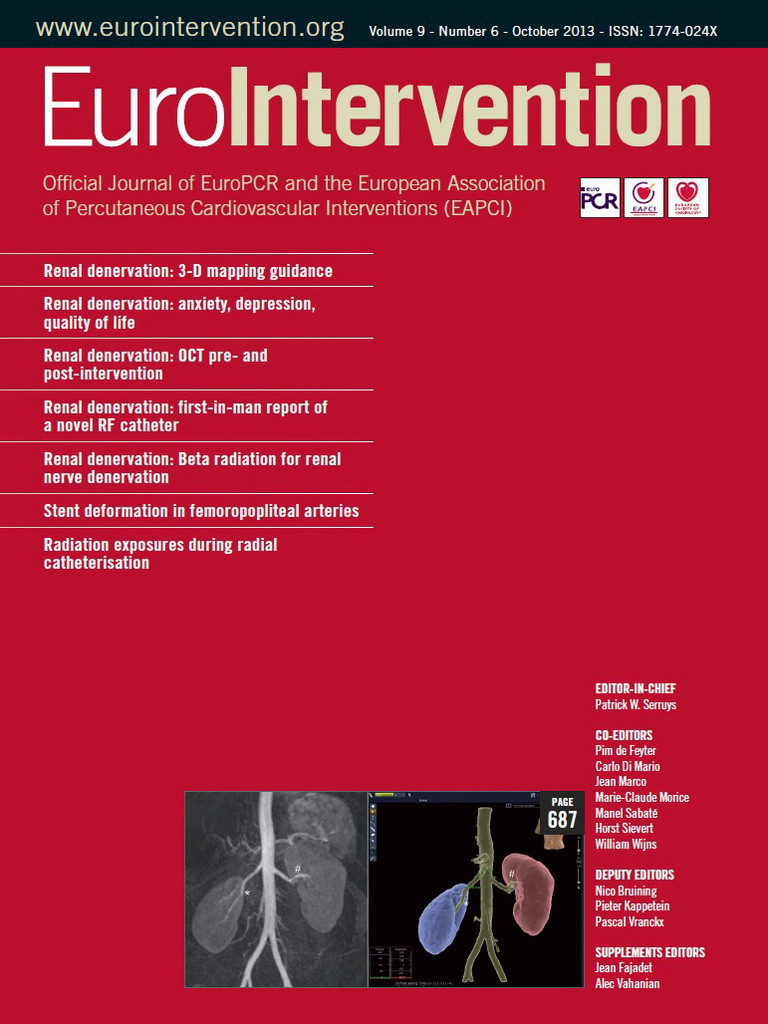The EuroIntervention Supplement “Renal Hypertension Treatments a new era in Interventional Medicine” was an excellent compilation of the newest and latest research. This is certainly a “must read” for newcomers to this novel approach of ablation for the treatment of resistant renal hypertension. All aspects in regard to pre-assessment, procedure, medication regimens and current technology are all well presented. The information was unbiased and well structured.
In reviewing all the articles of this special edition one notices a very important area that is almost completely forgotten: “pain during the procedure”. An example of this is in the article by Sonia Ammar et al entitled “Pathophysiology of renal denervation procedures: from renal anatomy to procedure parameters”1 where, in Table 3, under disadvantages are listed “pain, need for analgesia and sedation under all treatment approaches”. In their summary, the authors mention that “the presence of pain is a likely predictor of effective distortion of afferent nerves….as pain remains an unacceptable attendant of the procedure, different parameters are needed to distinguish a successful from an unsuccessful procedure.”
This makes one think that we are letting the patient suffer to see if we are hitting the right target. Would a patient want to undergo this procedure if they knew they would experience extreme pain, pain that could have been controlled with medication, even if the procedure along with this pain was for their own benefit?
There was one article in the supplement that briefly mentioned sedation and analgesia in renal denervation entitled “Renal denervation tips and tricks to perform a technically successful procedure“ by Stefan C. Bertog et al2. The authors state that “most renal denervation procedures are accompanied by (visceral, lower back or pelvic) pain.” “Hence routine administration of benzodiazepines and opioid analgesics is necessary”. When you look at what are being used in various centres throughout Europe today you will see these are operator preferences as there are no standards concerning what type, how much and how frequently the medication should be given. Is conscious sedation, incremental I.V. bolus administration or a slow I.V. infusion the best method? Also, which medications should be used, which have the best effects with the least side effects?
As there are different methods of renal denervation in use and more and more treatment technologies becoming available, it would seem important for a task force to be created to develop standards for pain control during renal denervation procedures. A few one-time ablations for 60 seconds each need less pain medication than an ablation that takes up to three minutes each side. Each case is different, yet all patients experience pain, which can often be very intense. This treatment will probably be used for other indications besides resistant hypertension in the future, so before it becomes a daily procedure in the cathlab a pain relief protocol should be established.
Conflict of interest statement
The author has no conflicts of interest to declare.
Thank you for your interest and for raising another of the yet unresolved issues of renal denervation (RDN). Indeed, ablation in renal arteries not only targets sympathetic nerves but also C pain fibres leading to visceral pain1. Hence, administration of analgesics and sedatives is mandatory and should be started before beginning the procedure. This is also mentioned in the current expert consensus document of the European Society of Cardiology2. In some countries, even the presence of an anaesthesiologist may be necessary.
Whether the perception of pain and pain intensity are predictors of an effective renal denervation is purely hypothetical. No data exist as to whether the dosage of analgesics during the procedure correlates with later blood pressure changes. Establishing these parameters as reliable markers of nerve damage will probably not be possible due to the high variability of pain perception and different effects of analgesic doses. Additionally, available devices for RDN differ concerning energy delivery and ablation times. New devices aim to reduce procedural time, which also impacts on pain duration. Finding periprocedural parameters of nerve damage remains the “Holy Grail” in renal denervation. Currently, we are treating patients without having information during the procedure as to whether or not it will be successful in terms of blood pressure reduction. We agree with Lynne Hinterbuchner that pain is an unacceptable procedural read-out from an ethical standpoint. Despite all research efforts appropriate pain management for each patient should be warranted.
Conflict of interest statement
The author received speaker’s honoraria from Ardian / Medtronic and St. Jude Medical.

